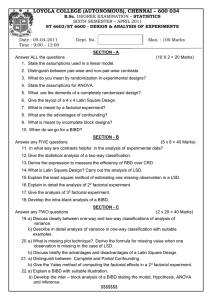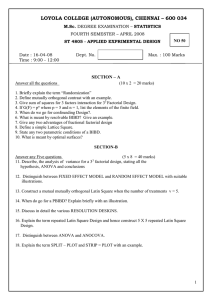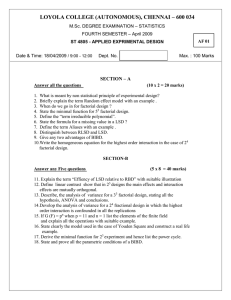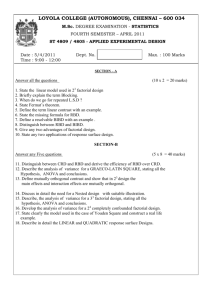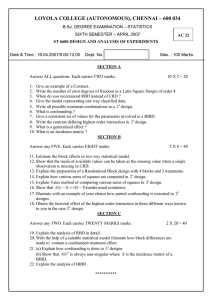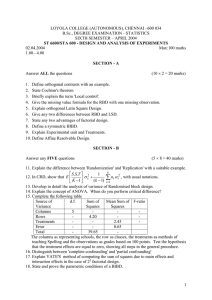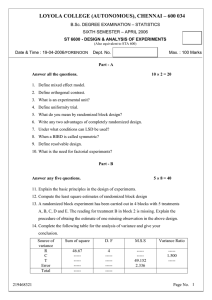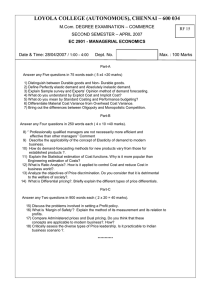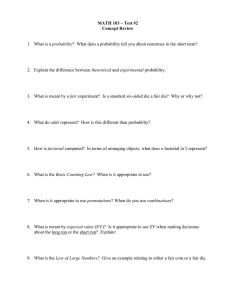LOYOLA COLLEGE (AUTONOMOUS), CHENNAI –600 034 M.Sc., DEGREE EXAMINATION - STATISTICS
advertisement
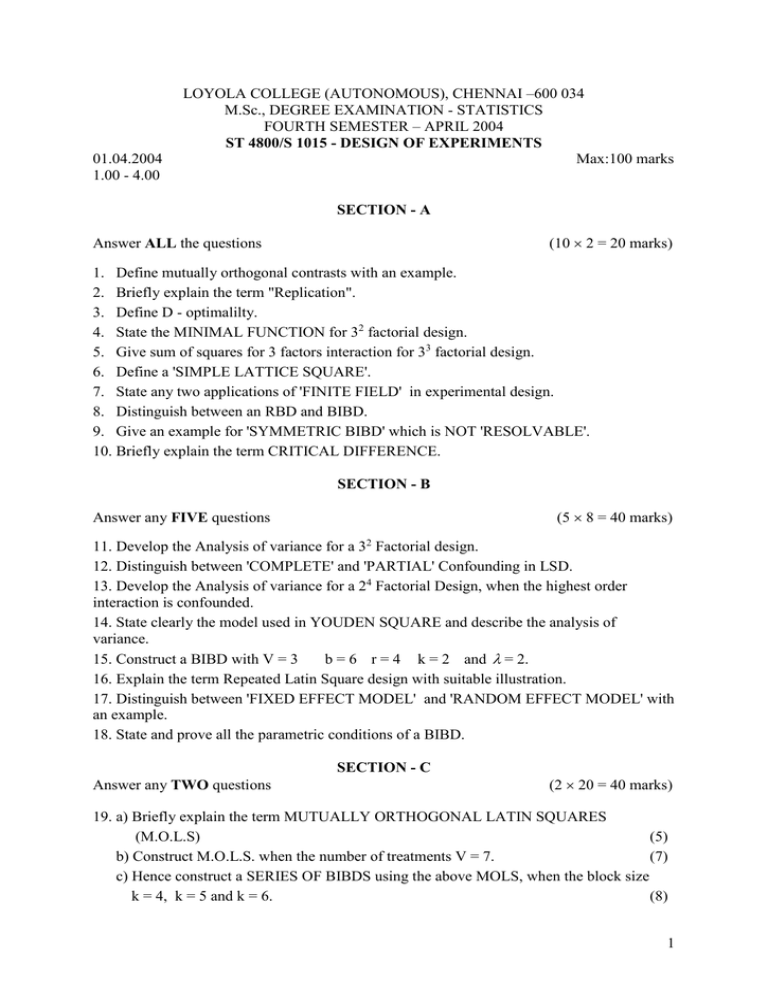
01.04.2004 1.00 - 4.00 LOYOLA COLLEGE (AUTONOMOUS), CHENNAI –600 034 M.Sc., DEGREE EXAMINATION - STATISTICS FOURTH SEMESTER – APRIL 2004 ST 4800/S 1015 - DESIGN OF EXPERIMENTS Max:100 marks SECTION - A (10 2 = 20 marks) Answer ALL the questions 1. Define mutually orthogonal contrasts with an example. 2. Briefly explain the term "Replication". 3. Define D - optimalilty. 4. State the MINIMAL FUNCTION for 32 factorial design. 5. Give sum of squares for 3 factors interaction for 33 factorial design. 6. Define a 'SIMPLE LATTICE SQUARE'. 7. State any two applications of 'FINITE FIELD' in experimental design. 8. Distinguish between an RBD and BIBD. 9. Give an example for 'SYMMETRIC BIBD' which is NOT 'RESOLVABLE'. 10. Briefly explain the term CRITICAL DIFFERENCE. SECTION - B (5 8 = 40 marks) Answer any FIVE questions 11. Develop the Analysis of variance for a 32 Factorial design. 12. Distinguish between 'COMPLETE' and 'PARTIAL' Confounding in LSD. 13. Develop the Analysis of variance for a 24 Factorial Design, when the highest order interaction is confounded. 14. State clearly the model used in YOUDEN SQUARE and describe the analysis of variance. 15. Construct a BIBD with V = 3 b = 6 r = 4 k = 2 and = 2. 16. Explain the term Repeated Latin Square design with suitable illustration. 17. Distinguish between 'FIXED EFFECT MODEL' and 'RANDOM EFFECT MODEL' with an example. 18. State and prove all the parametric conditions of a BIBD. SECTION - C Answer any TWO questions (2 20 = 40 marks) 19. a) Briefly explain the term MUTUALLY ORTHOGONAL LATIN SQUARES (M.O.L.S) (5) b) Construct M.O.L.S. when the number of treatments V = 7. (7) c) Hence construct a SERIES OF BIBDS using the above MOLS, when the block size k = 4, k = 5 and k = 6. (8) 1 20. a) Distinguish between 'Confounding' and 'FRACTIONAL REPLICATION'. (8) 4 b) Develop the analysis of variance for a 2 FRACTIONAL FACTORIAL design stating all the hypothesis, effects and conclusions. (12) 21. a) Discuss in detail confounding in 'MORE THAN TWO BLOCKS' using finite field. (10) b) Develop the analysis of variance for a BIBD. (10) 22. Write shot notes on the following: a) SPLIT - PLOT design b) PBIBD c) RESPONSE SURFACE DESIGN d) CONCOMITANT VARIABLE. (4 5 = 20 marks) 2
